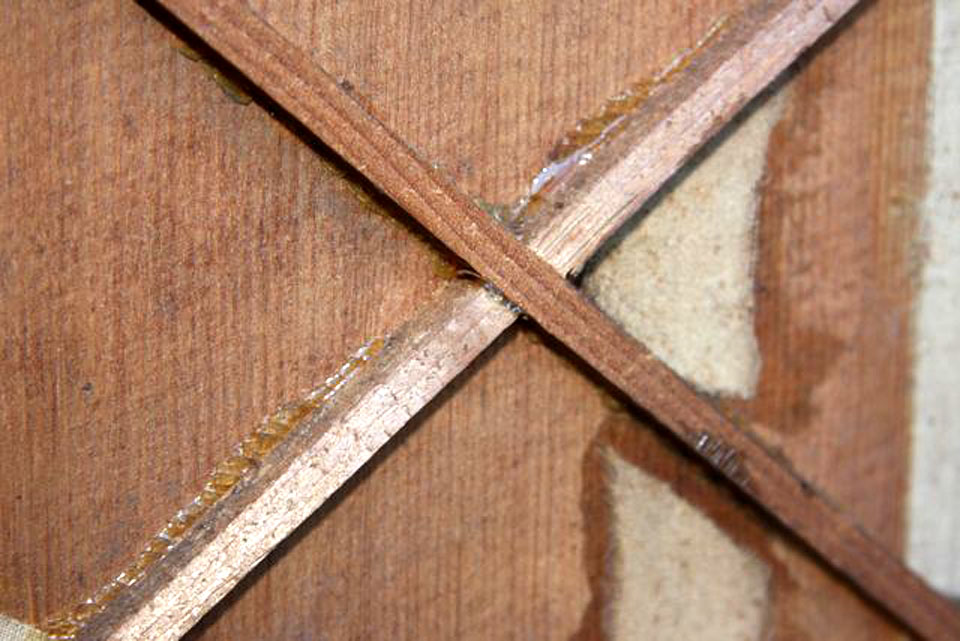No, I’m not referring to a new type of “guitar porn” – even though I’m happy to show my new Bohmann in various shades of undress…
This is the bracing pattern Kerry Char discovered upon removing the back of Bohmann’s “contra bass harp guitar.”
You’ll remember that I blogged about this instrument a while back, the crazy one with 10-string neck and Laurel & Hardy neck/headstocks. I ultimately managed to obtain it after several months of back-and-forth discussion.
The reason perhaps for this lattice-like “trellis” of bracing is that Bohmann’s “contra bass” has ten inches of soundboard real estate below that bridge! It seems that Bohmann’s advertised “contra bass” does not refer to extra bass strings (as he also made a 6-string “contra bass guitar”) but to its tone and size, as the bodies were huge and deep. Here it is compared to a Dyer:

Its body dimensions are nearly identical to Bohmann’s stated contra bass guitar dimensions: “Length of body, 23 inches; across body back of bridge, 19 inches; and depth of body, 6 inches.” This one is 5″ deep at the tail block, but about 5-3/4″ in the center of the heavily domed back. It’s 19″ wide at the lower bout and 14″ at the upper, but has a slightly longer body, at 24-1/8″!

The serious neck block for the twin necks.

Someone later added a second brace (through the soundhole) on top of the one below the soundhole, along with some new bridgeplate portions. The string-guide/attachment screws of Bohmann’s bridge also anchor it to the top.

Bohmann didn’t interlock his X-braces in any way. Each crosspiece consists of separate pieces butted up to the solid brace.

Kerry’s brace clean-up includes thin slices on top of the non-continuous cross braces to make a stronger joint at each cross of an X. He’s also replaced the critical brace under the soundhole and the two parallel bars under the fingerboard, along with a thin slice to strengthen the entire soundhole area. Remember, this will have 22 steel strings, and I want to be able to play it!

The large label on the back.
The Brazilian rosewood back and sides appear to be laminated. Kerry says the sides definitely are, and the back likely, as it is pristine, with nary a crack. Though the grain inside and out appears to match, this could be from creating veneer layers from the same chunk of rosewood. The purfling on the edge of the removed back prevented him from examining it – but he’s never seen a solid rosewood back (this one 110+ years old) that wasn’t cracked, especially one as heavily domed as this.

Putting it back together

I’m getting anxious to hear this thing!







Very cool! Keep us posted.